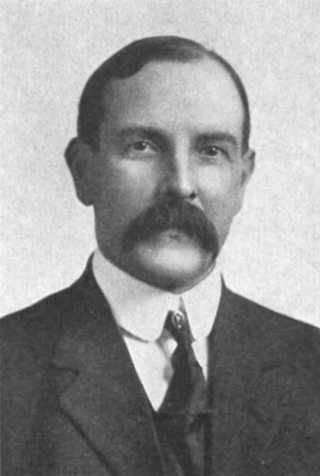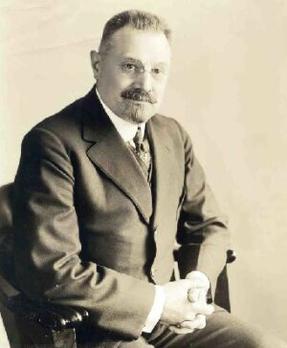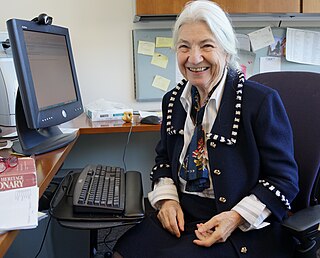Related Research Articles

Charles Proteus Steinmetz was an American mathematician and electrical engineer and professor at Union College. He fostered the development of alternating current that made possible the expansion of the electric power industry in the United States, formulating mathematical theories for engineers. He made ground-breaking discoveries in the understanding of hysteresis that enabled engineers to design better electromagnetic apparatus equipment, especially electric motors for use in industry.

Butler W. Lampson FRS is an American computer scientist best known for his contributions to the development and implementation of distributed personal computing.

Elihu Thomson was an American engineer and inventor who was instrumental in the founding of major electrical companies in the United States, the United Kingdom and France.

Arthur Edwin Kennelly was an American electrical engineer.
The American Institute of Electrical Engineers (AIEE) was a United States-based organization of electrical engineers that existed from 1884 through 1962. On January 1, 1963, it merged with the Institute of Radio Engineers (IRE) to form the Institute of Electrical and Electronics Engineers (IEEE).
August Uno Lamm was a Swedish electrical engineer and inventor. He was sometimes called "The Father of High Voltage Direct Current" power transmission. During his career, Lamm obtained 150 patents. In 1980 the Institute of Electrical and Electronics Engineers (IEEE) developed the Uno Lamm High Voltage Direct Current Award for contributions to the field of high voltage electrical engineering.
Vahid Tarokh is an Iranian–American electrical engineer, mathematician, computer scientist, and professor. Since 2018, he has served as a Professor of Electrical and Computer Engineering, a Professor of Mathematics, and the Rhodes Family Professor of Electrical and Computer Engineering at Duke University. From 2019 to 2021, he was a Microsoft Data Science Investigator at Microsoft Innovation Hub at Duke University. Tarokh works with complex datasets and uses machine learning algorithms to predict catastrophic events.

Edith Clarke was an American electrical engineer. She was the first woman to be professionally employed as an electrical engineer in the United States, and the first female professor of electrical engineering in the country. She was the first woman to deliver a paper at the American Institute of Electrical Engineers; the first female engineer whose professional standing was recognized by Tau Beta Pi, the oldest engineering honor society and the second oldest collegiate honor society in the United States; and the first woman named as a Fellow of the American Institute of Electrical Engineers. She specialized in electrical power system analysis and wrote Circuit Analysis of A-C Power Systems.

William Littell Everitt was a noted American electrical engineer, educator, and founding member of the National Academy of Engineering. He received his Ph.D. from Ohio State University in 1933. He was adviser of numerous outstanding scientists at OSU including Karl Spangenberg, and Nelson Wax. His PhD adviser was Frederic Columbus Blake.
Edward Joseph McCluskey was a professor at Stanford University. He was a pioneer in the field of Electrical Engineering.
Samuel Hawks Caldwell was an American electrical engineer, known for his contributions to the early computers.
Harold (Hall) Chestnut was an American electrical engineer, control engineer and manager at General Electric and author, who helped establish the fields of control theory and systems engineering.
Charles Felton Scott was an electrical engineer, professor at Yale University and known for his invention of the Scott-T transformer in the 1890s.

Benjamin Garver Lamme was an American electrical engineer and chief engineer at Westinghouse, where he was responsible for the design of electrical power machines. Lamme created an efficient induction motor from Nikola Tesla's patents and went on to design the giant Niagara Falls generators and motors and the power plant of the Manhattan Elevated Railway in New York City.
Arun Phadke is a University Distinguished Research Professor in the Department of Electrical and Computer Engineering at Virginia Tech. Along with fellow Virginia Tech professor James Thorp, Dr. Phadke received The Franklin Institute's 2008 Benjamin Franklin Medal in Electrical Engineering for their contributions to the power industry, particularly microprocessor controllers and Phasor measurement unit (PMU) technology in electric power systems.

John William Lieb was an American electrical engineer for the Edison Electric Light Company. Lieb was president of the American Institute of Electrical Engineers from 1904 to 1905. He received the IEEE Edison Medal for "the development and operation of electric central stations for illumination and power."

Lewis Buckley Stillwell was an American electrical engineer and the president of American Institute of Electrical Engineers (AIEE) from 1909 to 1910. He received the AIEE Lamme Medal (1933) and the AIEE Edison Medal (1935), for "his distinguished engineering achievements and his pioneer work in the generation, distribution, and utilization of electric energy." He also was inducted into the IEEE's Electrical Engineering Hall of Fame. His papers (1886-1939) are held in the Manuscript Division of the Princeton University Library. In 1898, he was elected to the American Philosophical Society. He was elected as a member of the National Academy of Sciences in 1921.

Joseph Slepian (February 11, 1891 – December 19, 1969) was an American electrical engineer known for his contributions to the developments of electrical apparatus and theory.

Ruzena Bajcsy is an American engineer and computer scientist who specializes in robotics. She is professor of electrical engineering and computer sciences at the University of California, Berkeley, where she is also director emerita of CITRIS.
Robert H. Park was an American electrical engineer and inventor, best known for the Park's transformation, used for simplifying the analysis of three-phase electric circuits. His related 1929 concept paper ranked second, when looking at the impact of all twentieth century power engineering papers. Park was an IEEE Fellow and a member of the National Academy of Engineering.